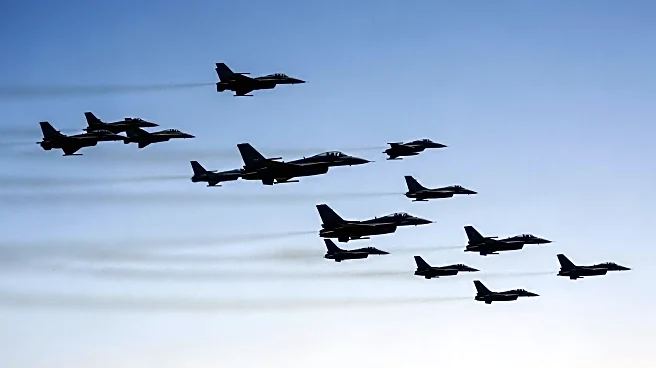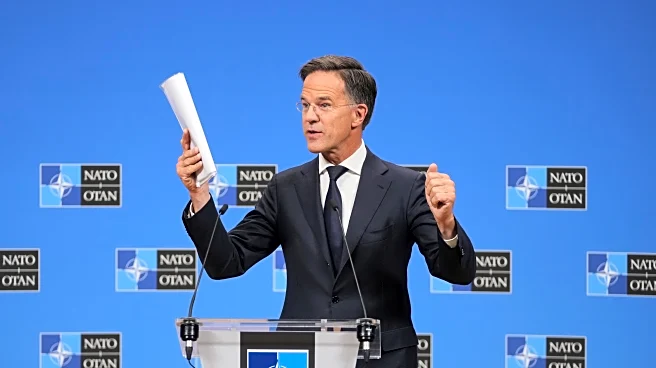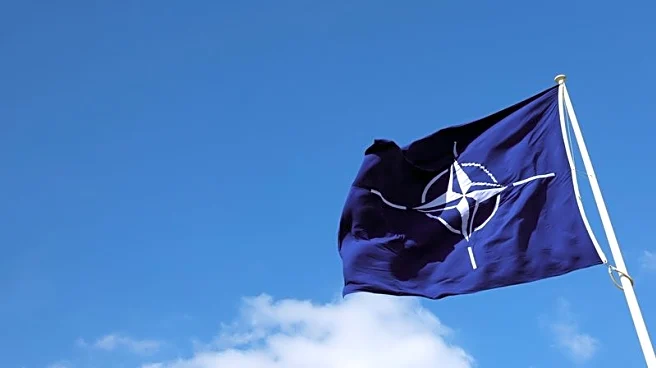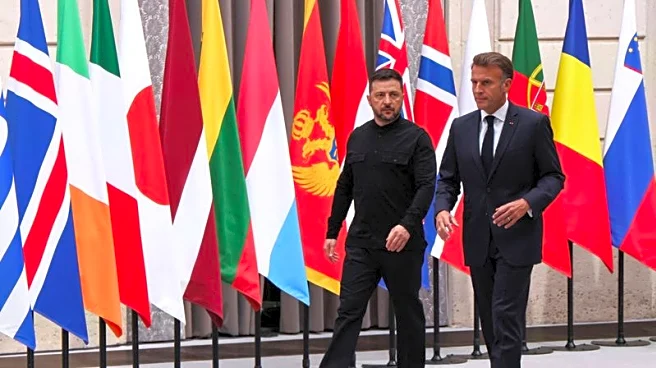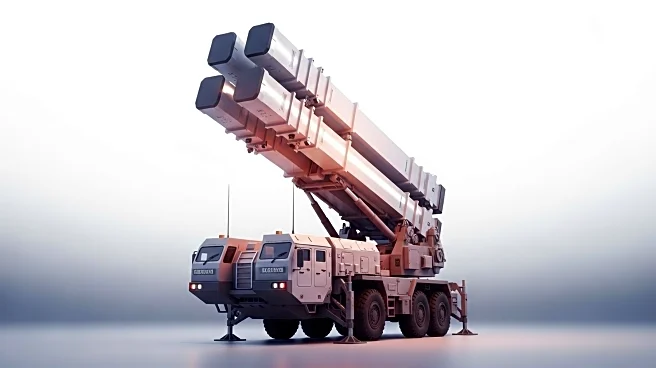What's Happening?
NATO is set to commence its annual nuclear deterrence exercise, Steadfast Noon, with an increased number of participating aircraft. The exercise will be centered around the North Sea area in Northwest Europe, utilizing the Netherlands' Volkel Air Base as the main hub. The United States will contribute four F-35 jets in the dual-capable aircraft role for the first time, replacing the previously used F-15E Strike Eagle. This exercise occurs amidst heightened nuclear tensions, with Russia's Deputy Foreign Minister Sergey Vershinin warning of potential direct military confrontations between nuclear powers. NATO officials emphasize the routine nature of Steadfast Noon, asserting that it is not targeting any specific country and is not linked to real-world events.
Why It's Important?
The exercise underscores NATO's commitment to maintaining a credible nuclear deterrent, which is crucial for the alliance's defense strategy. By involving a larger number of aircraft and diverse capabilities, NATO aims to demonstrate its readiness to protect member states against nuclear threats. The participation of the U.S. with advanced F-35 jets highlights the modernization efforts within NATO's nuclear capabilities. This exercise serves as a signal to potential adversaries that NATO is prepared to defend its allies, reinforcing the alliance's defensive posture amidst global nuclear tensions.
What's Next?
Steadfast Noon will begin with personnel briefings, followed by flight operations. The exercise will involve fighter aircraft and pilots certified for nuclear missions, focusing on protecting nuclear assets against various threats. NATO plans to enhance communication around the exercise to inform public debate and opinion, emphasizing its role as a responsible nuclear alliance. The exercise will mobilize around 2,000 personnel, with supporting elements hosted at RAF Lakenheath in the UK and Kleine Brogel Air Base in Belgium.
Beyond the Headlines
The exercise reflects broader geopolitical dynamics, including the modernization of nuclear arsenals by countries like France and Russia. NATO's emphasis on transparency and public communication aims to counter irresponsible nuclear rhetoric and reassure allies of its defensive intentions. The exercise also highlights the strategic importance of nuclear deterrence in maintaining global stability and preventing escalation.





